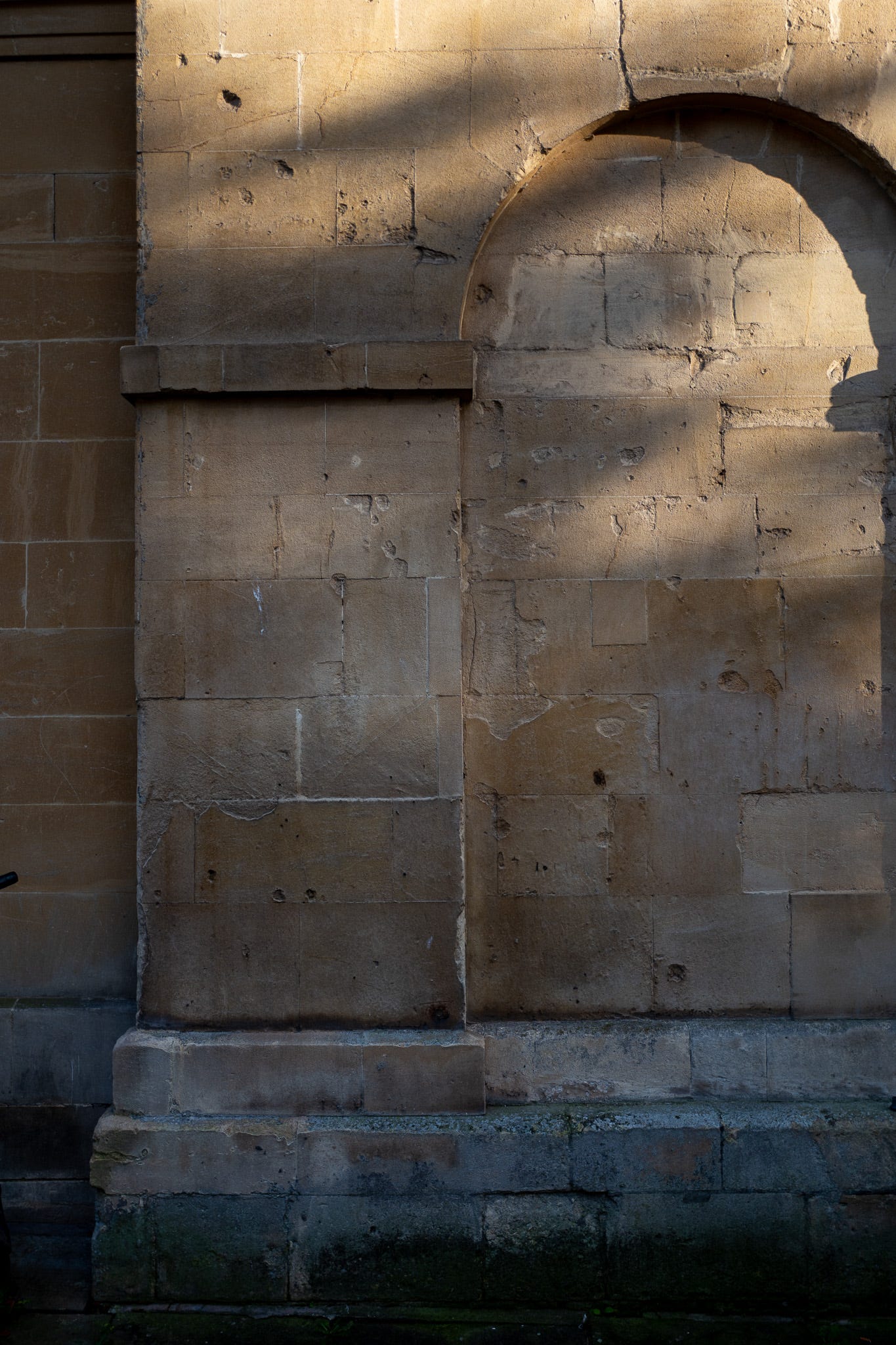The Baedeker Raids
Bath
As I emerged from a meeting in Bath last week, the light led me to this pockmarked, honey-coloured wall with a story to tell.
The damage was caused by shrapnel1 when a 250kg bomb hit the nearby Holy Trinity Church on the night of 25th April 1942.
It was part of a campaign by the Luftwaffe to bomb Britain’s historic towns and cities including Bath.
Known as the Baedeker Raids (after the German travel guides), they were in retaliation for the RAF bombing of the German city of Lübeck in March 1942.
Prompted by the pockmarked wall I decided to take an hour out from my working day, go on a mini-photo walk and explore this story.
(It’s a perk of being self-employed and I couldn’t resist the clear winter light).
Queen Square
A big bomb landed opposite this building. Most of the buildings in the Square had shrapnel wounds. Now healed.
The Circus
A bomb landed in the middle and destroyed a number of houses. The trees survived.
Assembly Rooms
Were left gutted. Now restored.
432 people died in Bath between 25–27 April 1942.
An aside: Lieutenant General Henry Shrapnel (from which the name shrapnel originates), was born and buried in my hometown of Bradford On Avon, a few miles from Bath.







Love this Andrew. On my Chippenham history walks I'd point out the pock marked buildings on St Mary's Street, one of Chippenham's oldest and much liked by John Betjeman. They weren't from shrapnel but pieces of gravestone broken up by a mob and thrown at the buildings to show their disgust at the result of the election of 1865. They blamed the gentry living in the street for returning two Tory MPs rather than a Liberal in place of one of the Torys. Rough lot in Chippenham!!
Up until around 2001, the bomb crater in the centre of the Circus was still visible. Obviously been filled in. If only a designer had created a clever little circular seating space for all those tired Japanese tourists. Opportunity missed!